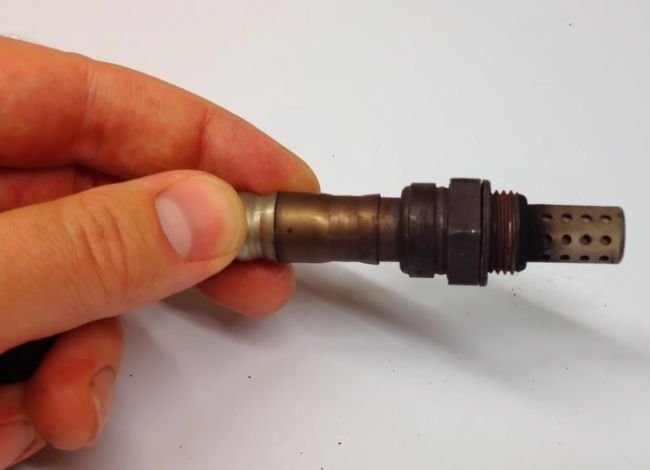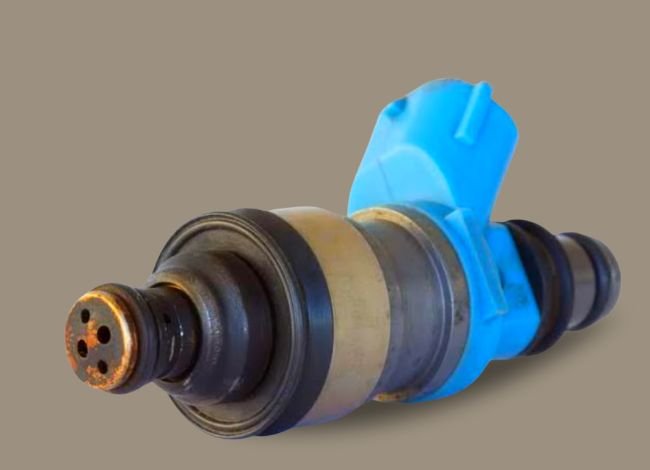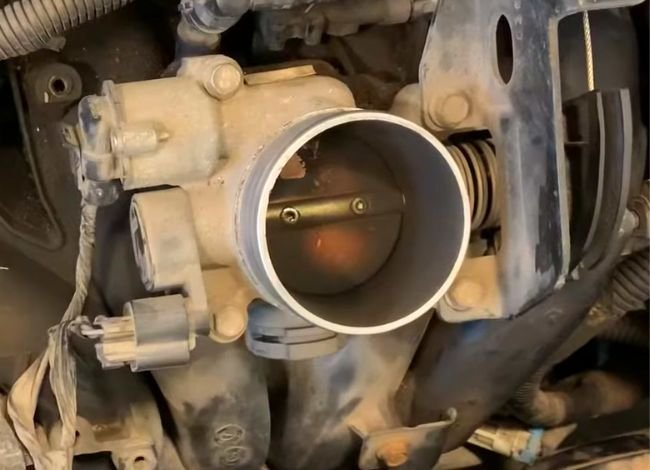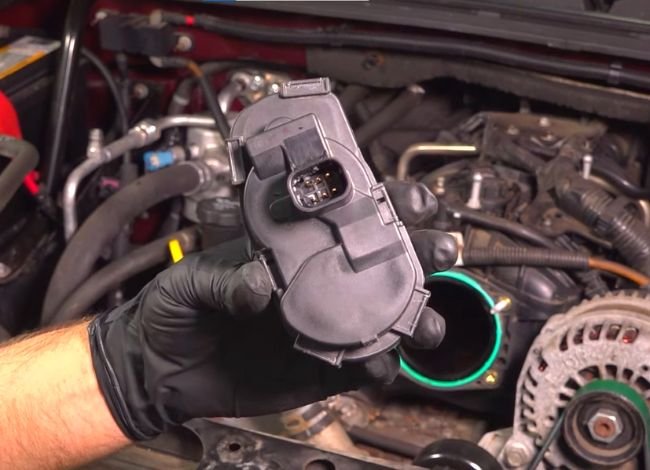Last Updated on April 22, 2025
RPM, or revolutions per minute, refers to the number of complete rotations the engine’s crankshaft makes in a single minute. It plays a crucial role in understanding the performance, efficiency, and health of your vehicle’s engine. The concept may seem technical, but it’s something every driver benefits from understanding. Whether you’re an everyday commuter or an automotive enthusiast, grasping how RPM works can help you make better driving decisions, save fuel, and maintain engine health.
What Does RPM Mean in a Car?
At the heart of every internal combustion engine lies the crankshaft, which converts the linear motion of the pistons into rotational motion. This rotation is what ultimately turns your car’s wheels. The speed at which this crankshaft rotates is measured in RPM.
For example, if your engine is operating at 2,000 RPM, it means the crankshaft is making 2,000 full rotations every minute. The RPM is displayed on the vehicle’s tachometer, which is usually located on the dashboard beside the speedometer.
The tachometer gives you a real-time update on how hard your engine is working. Monitoring it allows you to adjust your driving habits for better performance and fuel economy, and to prevent long-term wear or damage.
Why RPM Is Important
RPM affects almost every aspect of your car’s operation. Here’s why it’s essential:
- Fuel Efficiency: Engines generally burn more fuel at higher RPMs. Keeping your RPMs in the optimal range can improve gas mileage.
- Engine Performance: Some engines produce their peak torque and horsepower at specific RPMs. Knowing this helps you drive in the sweet spot for power.
- Transmission Shifting: Automatic transmissions shift based on RPM. In manual vehicles, drivers must monitor RPM to shift gears efficiently.
- Early Problem Detection: Irregular or fluctuating RPMs may indicate underlying engine or transmission problems.
How RPM Changes With Driving Conditions
RPM varies based on your vehicle’s speed, road condition, and the gear you’re in. Here’s how:
- Low Gear, High RPM: When accelerating from a stop, the engine needs to work harder, causing RPMs to spike.
- High Gear, Low RPM: Cruising at highway speeds requires less effort from the engine, resulting in lower RPMs.
- Inclines and Hills: Going uphill demands more power, increasing the RPM.
- Heavy Loads: Towing or carrying heavy items also increases RPM as the engine works harder.
Example:
If you’re cruising at 60 mph in 5th gear, your RPM might hover around 2,000. But the same speed in 3rd gear would push it above 3,000 RPM, burning more fuel and stressing the engine.
Ideal RPM Fluctuating While Driving
Most modern cars are designed to operate efficiently within the 1,500 to 2,500 RPM range under normal driving conditions. Sports cars and performance vehicles may have a higher optimal range.
| Driving Mode | Ideal RPM Range |
|---|---|
| Idling | 600 – 1,000 RPM |
| City Driving | 1,200 – 2,000 RPM |
| Highway Cruising | 1,800 – 2,500 RPM |
| High Performance | 3,000 – 6,000 RPM |
| Redline (Max Limit) | Varies by car, 6,000+ RPM |
Always avoid the red zone on your tachometer—it indicates the upper limit and pushing into this zone regularly can damage your engine over time.
RPM and Fuel Efficiency
Fuel efficiency is greatly affected by how you manage your engine RPM. Driving at higher RPMs causes your engine to consume more fuel because it’s working harder and burning more gas per minute.
To optimize fuel economy:
- Shift gears earlier in manual cars to stay in lower RPMs.
- Use cruise control to maintain steady RPM on highways.
- Avoid aggressive acceleration that spikes RPM.
- Regularly service your vehicle to ensure RPM stays within a healthy range.
Quick Causes of RPM Issues
RPM issues can indicate a variety of mechanical problems. Below are common causes of abnormal RPM behavior:
- Faulty Spark Plugs or Ignition Coils: Cause misfires and inconsistent engine RPM.
- Vacuum Leaks: Allow excess air into the intake, confusing the engine’s air-fuel ratio.
- Dirty Throttle Body: Affects the amount of air entering the engine.
- Clogged Fuel Injectors: Reduce or disrupt fuel delivery.
- Failing Mass Airflow Sensor (MAF): Gives incorrect air measurement to the ECU.
- Defective Idle Air Control Valve (IACV): Causes irregular idle RPM.
- Bad Throttle Position Sensor (TPS): Confuses the ECU about pedal input.
- Worn Fuel Pump: Causes inconsistent fuel pressure.
- Malfunctioning ECU or Sensors: Send inaccurate data to the engine control system.
Quick Solutions for RPM Problems
Here are some practical steps to fix common RPM-related issues:
- Clean the throttle body to ensure proper air intake.
- Replace the air filter if it’s clogged or dirty.
- Inspect and replace spark plugs and ignition wires.
- Use a fuel injector cleaner or manually clean them if necessary.
- Scan for error codes using an OBD2 scanner and resolve issues accordingly.
- Clean or replace the mass airflow sensor.
- Ensure the idle air control valve is operational.
- Check for vacuum leaks by inspecting all hoses for cracks or damage.
Causes of Fluctuating RPM While Driving
Fluctuating RPM can make your car feel jerky or unstable. The following are detailed causes:
1. Dirty or Faulty Sensors
Sensors like the MAF sensor, oxygen sensors, and coolant temperature sensors help regulate engine functions. When these become dirty or fail, they can send incorrect data to the ECU, resulting in erratic RPM.
2. Vacuum Leaks
Cracks or holes in the vacuum system allow unmetered air to enter the engine, causing fluctuations in RPM due to an imbalanced air-fuel mixture.
3. Malfunctioning Throttle Body
A dirty or faulty throttle body disrupts airflow into the engine, directly affecting RPM control. If it sticks or doesn’t respond accurately, expect RPM spikes or dips.

4. Clogged Air Filter
A restricted air filter limits airflow into the combustion chamber, causing RPM changes as the engine struggles to maintain its air-fuel ratio.
5. Faulty Transmission Components
Slipping gears, a failing torque converter, or delayed shifts can cause RPM fluctuations. In automatic transmissions, this is often due to low transmission fluid or worn internal components.

6. Inconsistent Fuel Supply
If the fuel filter is clogged or the fuel pump is failing, fuel delivery becomes inconsistent, causing the engine to fluctuate in power and RPM.
7. Idle Air Control Valve (IACV) Issues
When your car is at a stop or slowing down, the IACV regulates airflow. If it fails, the engine may not idle properly, causing RPMs to rise or fall unexpectedly.

8. Electrical Problems
A weak alternator or failing battery may result in an unstable power supply to the ECU and sensors, which can cause irregular RPM.
9. Faulty Fuel Injectors
Clogged or malfunctioning injectors can deliver inconsistent fuel levels, causing rough idling or surging RPMs during acceleration.
10. Bad Throttle Position Sensor
The TPS tells the ECU how much throttle input you’re giving. If it sends the wrong signal, the ECU may adjust fuel and air delivery improperly, resulting in RPM instability.
11. Blocked Catalytic Converter
A clogged catalytic converter restricts exhaust flow, leading to backpressure that reduces engine efficiency and causes RPM fluctuations, especially during acceleration.
Let me know if you’d like to proceed with Part 2, which will cover:
- How to Monitor RPM for Better Driving
- Diagnosing RPM Fluctuation with OBD2 Scanners
- Preventive Maintenance Tips to Avoid RPM Issues
- When to See a Mechanic
- FAQs about RPM
Or would you like this version exported in Word/HTML format?
How to Identify the Source of RPM Fluctuation?
RPM fluctuation in a vehicle can be caused by various factors, ranging from simple issues like dirty air filters to more complex problems involving sensors or transmission systems. Identifying the root cause can be tricky, but following a step-by-step diagnostic approach can simplify the process.
1. Observe the RPM Behavior
Start by monitoring how and when the RPM fluctuates:
- Is the RPM fluctuating while idling, accelerating, or cruising?
- Is the fluctuation sudden or gradual?
- Does it happen when the engine is cold or warm?
These clues help narrow down the potential causes.
2. Check the Dashboard Warning Lights
Modern vehicles are equipped with onboard diagnostics. If there’s an issue with the engine or its components, a warning light—like the check engine light—may illuminate. This is often the first indicator of a system failure.
3. Listen for Unusual Engine Sounds
Pay attention to any knocking, ticking, or whining noises coming from the engine. These could point to mechanical wear or timing issues that might be causing RPM instability.
4. Inspect the Air Filter
A dirty or clogged air filter restricts airflow into the engine, causing an imbalance in the air-fuel mixture. This can result in erratic RPM. Remove the air filter and inspect it for debris. Replace it if it appears dirty.
5. Evaluate the Fuel System
The fuel system plays a critical role in engine performance. Two common culprits in RPM issues include:
- Clogged fuel filters: Prevent fuel from flowing efficiently.
- Failing fuel pumps: Cannot deliver adequate fuel pressure.
Either issue can starve the engine of fuel, resulting in RPM surges or drops.
Related: How to test a car battery with a multimeter?
6. Check for Vacuum Leaks
A vacuum leak can cause incorrect readings for air intake, leading to inconsistent RPM. Examine hoses and gaskets for signs of cracks or wear. Spray soapy water while the engine is idling and watch for bubbles to detect leaks.
7. Use a Diagnostic Scan Tool
A diagnostic tool (OBD-II scanner) can read trouble codes from the Engine Control Module (ECM). These codes point to faulty sensors, misfires, or other problems. This method is one of the fastest ways to pinpoint the cause of RPM fluctuations.
Step-by-Step Solutions to Fix RPM Fluctuation
After identifying the potential cause of the RPM instability, you can follow these step-by-step solutions tailored to each type of issue:
Stage 1: Address Basic Maintenance Issues
- Clean or Replace the Air Filter
A blocked air filter reduces air intake, disrupting the engine’s combustion cycle. Cleaning or replacing it ensures the engine breathes properly. - Replace Faulty Engine Sensors
Sensors like the Mass Air Flow (MAF) sensor or Throttle Position Sensor (TPS) help regulate RPM. If malfunctioning, they should be replaced to restore balance. - Fix Vacuum Leaks
Use vacuum leak detection spray or smoke testing. Replace worn-out hoses or intake manifold gaskets as needed.
Stage 2: Repair Component Failures
- Throttle Body Cleaning or Replacement
A sticky or carbon-clogged throttle body can restrict airflow. Clean it using throttle body cleaner or replace it if it’s mechanically damaged. - Fix Ignition System Issues
Misfires caused by worn-out spark plugs, bad ignition coils, or faulty plug wires can result in RPM drops. These components should be tested and replaced as necessary. - Transmission and Torque Converter Repair
Slipping transmissions or faulty torque converters can cause fluctuating RPMs, especially when accelerating. A mechanic can run a transmission fluid pressure test to detect internal problems. - Fix Fuel Delivery Issues
Clean or replace the fuel filter and test fuel pump pressure. If pressure is below spec, the pump may need replacing.
Stage 3: Correct Electrical and Sensor-Related Problems
- Check and Replace the Alternator or Battery
Low voltage from a weak alternator or battery can cause sensors to behave unpredictably, leading to RPM spikes. Test voltage using a multimeter. - Inspect the Throttle Position Sensor (TPS)
The TPS monitors the angle of the throttle and relays this to the ECM. A faulty TPS may require recalibration or replacement. - Clean or Replace the Catalytic Converter
A clogged catalytic converter restricts exhaust flow, reducing engine performance and causing unstable RPM. If the engine struggles or you smell rotten eggs, the converter might need cleaning or replacement.
Stage 4: Address Air Intake and Idle Control Issues
- Clean the Throttle Body
A dirty throttle body disrupts airflow at idle, especially in older vehicles. Clean it to remove carbon buildup. - Replace the Mass Air Flow (MAF) Sensor
If the MAF sensor sends inaccurate air volume readings to the ECM, it affects fuel injection and RPM stability. Replace it if cleaning doesn’t help. - Check and Adjust the Idle Air Control Valve (IACV)
The IACV regulates airflow at idle. If dirty or failing, it may cause erratic RPM at stoplights or while idling. Clean or replace the valve as needed.
Stage 5: Fuel and Exhaust Optimization
- Replace Spark Plugs
Spark plugs are critical for proper combustion. If fouled or worn, they can cause misfires and RPM fluctuations. Use manufacturer-recommended replacements. - Inspect and Clean Fuel Injectors
Dirty or clogged injectors can cause lean or rich fuel conditions. Use fuel injector cleaner or have them professionally cleaned. - Repair Exhaust Leaks
A damaged or leaking exhaust can interfere with back pressure and cause engine inefficiency. Weld or replace exhaust components where necessary. - Maintain or Replace the EGR Valve
The Exhaust Gas Recirculation (EGR) valve reduces emissions by recirculating part of the exhaust gas. A clogged or malfunctioning EGR can confuse the engine’s air/fuel mix, leading to unstable RPM.
How Do RPM Fluctuations Affect the Vehicle’s Performance and Fuel Efficiency?
RPM, or revolutions per minute, represents how fast the engine’s crankshaft rotates. RPM fluctuation is more than just a visual annoyance—it can significantly affect your vehicle’s performance, smoothness, and fuel economy.
1. Poor Acceleration and Drivability
Sudden surges or drops in RPM can cause jerky motion, especially during gear shifts or acceleration. This behavior is not only uncomfortable for the driver but may also be dangerous in certain situations.
2. Increased Wear on Engine and Transmission
Fluctuating RPM places unnecessary strain on engine components. Over time, this can accelerate the wear of critical parts like pistons, camshafts, or the clutch assembly in manual vehicles.
3. Reduced Fuel Efficiency
When the RPM fluctuates unnecessarily, your engine might burn more fuel than required. This can:
- Lower miles per gallon (MPG)
- Increase emissions
- Force the engine to run in sub-optimal conditions
4. Inconsistent Engine Performance
RPM fluctuations can also indicate an imbalance in the air-fuel mixture or ignition timing, both of which reduce the engine’s overall power and responsiveness.
Best Practices to Prevent RPM Instability
To ensure consistent RPM and improve overall engine performance, follow these maintenance and driving practices:
- Perform Regular Tune-Ups: Replace spark plugs, air filters, and fuel filters at recommended intervals.
- Use High-Quality Fuel: Poor-quality fuel can leave deposits that clog injectors or reduce combustion efficiency.
- Avoid Aggressive Driving: Sudden acceleration or braking can trigger RPM instability, especially in vehicles with aging components.
- Monitor Sensor Health: Use an OBD-II scanner regularly to keep tabs on sensor functionality.
- Check for Software Updates: Some RPM issues may be related to outdated engine control software. Visit your dealership to ensure your ECM firmware is up to date.
RPM Fluctuations: Automatic vs. Manual Transmissions – Causes, Effects & Solutions
RPM (Revolutions Per Minute) fluctuations can occur in both automatic and manual transmission vehicles. While the symptoms may appear similar—such as jerky acceleration, uneven power delivery, or irregular engine noise—the underlying causes and corrective actions can differ significantly depending on the type of transmission.
Let’s break down the common causes, how they impact vehicle performance, and what you can do to prevent or resolve RPM fluctuations in both automatic and manual transmissions.
RPM Fluctuations in Automatic Transmissions
Automatic transmissions are designed to shift gears smoothly without driver intervention. However, certain internal issues can disrupt this smooth operation, causing the engine’s RPM to rise or fall unexpectedly.
1. Faulty Torque Converter
The torque converter transfers power from the engine to the transmission in an automatic vehicle. If it’s damaged or failing, it may cause the RPMs to surge, drop, or behave erratically. Common signs include slipping gears, a shuddering sensation while accelerating, and overheating transmission fluid.
2. Clogged or Dirty Transmission Filter
A clogged filter restricts fluid flow, causing pressure imbalances within the transmission. This can lead to delayed shifting, jerky gear changes, or inconsistent RPM behavior, especially during acceleration.
3. Worn or Faulty Solenoids
Transmission solenoids control the flow of transmission fluid and gear shifting. If a solenoid is malfunctioning or sticking, it can cause improper gear engagement or hesitation, leading to unpredictable RPM fluctuations.
4. Sensor Malfunctions (TPS, MAF, VSS)
The Throttle Position Sensor (TPS), Mass Air Flow Sensor (MAF), and Vehicle Speed Sensor (VSS) provide essential data to the transmission control module. Faulty signals from these sensors can mislead the ECU, leading to erratic shifting and unstable RPM.
RPM Fluctuations in Manual Transmissions
Manual transmissions give the driver full control over gear selection. While this offers more driving flexibility, it also means the risk of driver-induced RPM issues is higher.
1. Incorrect Clutch Operation
One of the most common causes of RPM fluctuation in manual transmissions is improper clutch use. Holding the clutch too long or shifting too early/late can cause the engine to rev unnecessarily or stall, both of which result in unstable RPM.
2. Worn Clutch or Pressure Plate
A worn-out clutch can slip under load, causing a noticeable rise in RPM without corresponding acceleration. If the pressure plate is weak, it may fail to properly engage the flywheel, also resulting in erratic RPM levels.
3. Deliberate Downshifting
Sometimes RPM fluctuations are intentional—especially when downshifting to maintain control on steep descents or prepare for overtaking. This isn’t a mechanical fault but a deliberate action by skilled drivers to stay within the optimal power band.
4. Gearbox Wear or Misalignment
Worn gears or bearings in the transmission can create inconsistent power delivery, causing RPM to jump or dip during gear engagement. This can be felt as rough or noisy gear changes.
How RPM Fluctuations Affect Vehicle Performance
Regardless of transmission type, uncontrolled RPM fluctuations negatively affect a vehicle’s drivability, efficiency, and longevity.
1. Reduced Fuel Economy
When RPMs spike unexpectedly, it often means the engine is working harder than necessary, burning more fuel in the process. Over time, this results in lower miles per gallon (MPG).
2. Rough or Jerky Ride
Unexpected shifts or rev changes can make driving uncomfortable. It may feel like the car is “lurching” or “dragging” between gears, especially at low speeds.
3. Premature Wear and Tear
Fluctuating RPMs place unnecessary stress on the drivetrain, including the clutch, transmission, engine mounts, and internal components. Left unchecked, this can lead to costly repairs.
4. Safety Hazards
RPM fluctuations that result in hesitation or sudden surges can be dangerous during overtaking, merging, or navigating intersections.
Importance of Routine Maintenance to Prevent RPM Fluctuations
Proactive vehicle maintenance is essential to prevent RPM swings and ensure your vehicle remains in top condition. Here are the key areas to focus on:
1. Maintain Proper Fluid Levels
Transmission and engine fluids play a critical role in maintaining smooth gear operation and consistent RPM. Low or dirty fluid can lead to erratic shifting and power loss.
- Check transmission fluid regularly and refill or replace it according to manufacturer recommendations.
- Use only the fluid type specified for your transmission (e.g., ATF for automatics, gear oil for manuals).
2. Replace Air and Fuel Filters
Clogged filters restrict airflow and fuel delivery, which affects the engine’s performance and can cause the RPM to rise or fall inconsistently.
- Inspect and replace filters every 12,000–15,000 miles or as advised in your owner’s manual.
- A clean air filter ensures proper air-fuel mixture, while a fresh fuel filter prevents engine hesitation.
3. Tune-Up and Sensor Diagnostics
Regular tune-ups ensure that spark plugs, ignition coils, sensors, and other components are in working order. Faulty sensors are a major contributor to RPM irregularities.
- Use an OBD2 scanner to check for trouble codes.
- Clean or replace malfunctioning sensors (e.g., MAF, TPS, oxygen sensors).
4. Inspect Transmission Components
In both automatic and manual systems, wear and tear on components like clutch plates, solenoids, and mounts can lead to performance dips.
- For automatics: Inspect torque converter, solenoids, and control module.
- For manuals: Check clutch condition, gearbox alignment, and transmission mounts.
5. Follow Manufacturer Maintenance Schedule
Neglecting scheduled maintenance can lead to cascading failures that affect engine RPM and more. Always follow your car’s specific service intervals.
Relationship Between RPM Fluctuations and Transmission Problems
The connection between engine RPM and transmission health is direct. When the transmission fails to efficiently manage power delivery, it can cause the engine’s RPM to behave abnormally.
1. Slipping Transmission
A transmission that slips during gear changes causes a sudden jump in RPM without acceleration. This is usually accompanied by a burning smell, poor response, or delayed gear engagement.
2. Sudden RPM Drop
If the transmission rapidly shifts into a higher gear or disengages unexpectedly, RPM may drop too fast, causing a noticeable hesitation or “dragging” sensation.
3. Improper Shifting
Harsh or delayed shifting can be caused by a worn valve body, degraded fluid, or solenoid issues. This leads to “hunting” for the right gear, which makes RPM bounce erratically.
4. Sensor Failures
Sensors like the VSS and TPS relay information to the transmission control unit (TCU). If these fail, the TCU may command incorrect shifts, leading to unpredictable RPM behavior.
5. Low or Contaminated Transmission Fluid
Fluid that is low, burned, or contaminated affects pressure and cooling, leading to internal wear and incorrect gear engagement. This directly results in irregular RPM.
How to Diagnose RPM Fluctuations
If you suspect an issue, here are some steps to help pinpoint the cause of RPM fluctuations:
- Use an OBD2 Scanner: Retrieve any stored fault codes that may indicate sensor or transmission issues.
- Check Transmission Fluid: Look at the color, smell, and level of your transmission fluid.
- Test the Throttle Response: A delayed or erratic response may indicate a TPS or MAF issue.
- Inspect the Clutch (Manual): If the RPM rises but the car doesn’t accelerate, it may be a slipping clutch.
- Observe During Idle and Driving: Does the RPM fluctuate at idle, during shifts, or under load?
Best Practices to Avoid RPM Fluctuations
In addition to regular maintenance, adopting good driving habits can significantly reduce the chance of RPM issues:
- Avoid aggressive acceleration and sudden braking.
- Warm up your engine before heavy driving.
- Avoid riding the clutch in manual transmissions.
- Use correct driving modes in automatic cars (Eco, Sport, etc.).
- Drive conservatively on inclines or declines to avoid gear-hunting.
Final Verdict
RPM fluctuations are not just a minor annoyance—they often indicate underlying issues within your engine or transmission system. Whether it’s due to a failing sensor, poor fluid condition, driver error, or a mechanical fault, addressing RPM inconsistencies early can prevent major damage and improve overall driving comfort.
Key Takeaways:
- Regular maintenance is essential to prevent and detect RPM-related issues.
- Both automatic and manual transmissions have unique causes of RPM fluctuations.
- Faulty sensors, solenoids, or transmission fluid are common culprits.
- Ignoring RPM issues can lead to expensive repairs and compromised safety.
- Prompt diagnosis and professional inspections are crucial for long-term vehicle health.
If you experience RPM fluctuations while driving, don’t ignore them. Consult a certified mechanic, get a full diagnostic check, and follow a strict maintenance schedule to keep your vehicle running smoothly for years to come.
Meet our professional car mechanic, Russell D. Steele, who has been in this field for five consecutive years and works with several automotive companies. He completed the "AUTOMOTIVE & LIGHT DUTY DIESEL TECHNOLOGY" course from NorthWest Lowa Community College, where he learned essential diagnostic and transportation management skills and became a certified mechanic.
